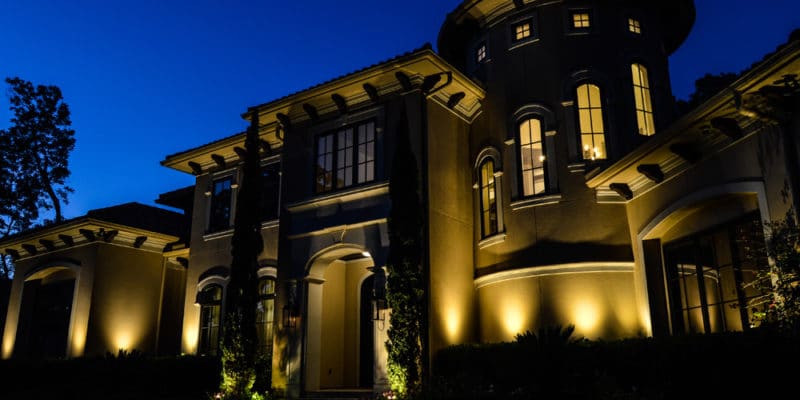Outdoor Lighting Tips & Advice From Our Lighting Experts In Houston
Part 2
2. The Variety Of Fixtures To Pick From
- Path Lights: Path lighting is one of the common elements in landscape lighting designs. The bulbs are often mounted on small posts or available as a post with built-in lights and capped with a diffuser. You can use path lights to frame out your garden and even spread out down the paths and driveway. You can install them around a pond or lining the edges of your garden.
- Ceiling Lights & Hanging Lights: They both are classified and hanging lights and are best suited for damp locations where they are not exposed to wet conditions. You can install them as a featured light or integrated them into a surface since they often have a brighter illumination. You can find hanging and ceiling lights in an array of style options and brightness levels.
- Wall Lights: They are a common feature in the front and back porch areas of most homes. The lighting features can be mounted vertically on the surfaces and tend to be durable and offer an attractive illumination. That is why most outdoor wall lights are used as decorative installations that provide an accent or ambient light that is not blinding. Consider them if you want something to light up your porch or patio.
- Post Lights & Pier Mount Lights: They are light fixtures mounted on posts or top of a structure for an overhead illumination. You will find these installed on fences, gates, entries, and even around a decking. Since the pier-mount or post lights are fixed in exposed surfaces or sections, what you pick should have an excellent wet-rating meaning they can withstand rain, moisture, and various weather conditions. The pier mount lights are somewhat similar to the post lights, but they are meant to go on top of walls or columns.
- Landscape Lights: With the landscape lights, you will have to work with fixtures that provide a low illumination. They will have a low wattage; thus, they must be set up in a small voltage system independent from the ceiling and wall lights. You can combine spot, path, and floodlights to create a layered illumination. The spotlights can be used to highlight various landscaping elements like trees, bushes, sculptural details, or unique features of the building. You achieve a seamless presentation, ensuring the good lights are recessed into the ground so that you achieve some uniformity in your hardscape and landscape setting.
- Deck & Step Lights: The deck and step lighting are installed directly into the hardscapes, working as an accent and safety features for architectural details and stairs in the dark. You can opt for them if you need fixtures that radiate entertainment spaces or down stone walls.
3. Safety & Security Concerns
As you plan the outdoor lighting design, consider how it will help enhance safety and security. You must understand your location so that you can formulate the ideal lighting system that might include Wi-Fi controlled LEDs and even motion sensor capabilities. Your primary focus should be on the entry points like the main gate, driveway, front door, and garage.
The motion sensors will help alert you of any movement, especially when you combine that feature with bright bulbs. Such a set up can help ward off intruders. When you have such concerns, you will benefit from the following options:
- Dusk To Dawn Lights: They are fitted with photo sensors that trigger them to turn on and off when the sun’s light fades, giving way for the night. The fixtures are what to get if you need a system that lights up automatically and when required.
- Motion Sensor Lights: The lights turn on when triggered by nearby movements; hence, they are best applied as security lights. You can install them in areas that have high traffic. Moreover, the best models of these lighting fixtures allow you to set the angle and range of the motion sensor, with these features varying from one model and design to the next.
If you would like to discover more tips and tricks from Robert Huff Illuminations; visit our blog. Call or contact us today if you need a professional lighting designer with your outdoor lighting design. For the rest of this article please click here.

